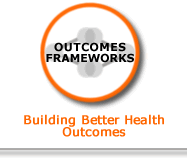 |
E . Evidence for multi-agency response and direct support to children and young people(Families model) |
Summary There is highly processed and review level evidence to suggest that direct support to children affected by others’ substance misuse and those at-risk, can improve health, behavioural, developmental and social outcomes. Rationale For child or young person affected/at risk *For details see Prevention Logic Model 1, Link B: Evidence for parenting and early years interventions. There is evidence of effectiveness of improvements in coping strategies and social behaviours among adolescents where drug use exists in their family, across a range of targeted prevention interventions (family-oriented and school/community-based programmes). School-based programmes showed improved levels of knowledge about alcohol, drugs, addiction and their effects on families. Evidence in relation to self-worth and substance use was however inconsistent. [3] There is limited evidence of effectiveness of interventions to support children to develop knowledge and skills in dealing with issues in their lives related to others’ substance misuse (usually a parent’s). Group-based approaches were identified by Mitchell and Burgess (2009) in their Scottish-Government-commissioned review for the Scottish Child Care and Protection Network – reported positive effects are limited to understanding the impact of addiction, communication skills, coping strategies and improved resilience. [4]
Scottish policy and practice note: Effective partnership working is an underpinning principle of Getting It Right For Every Child (GIRFEC) which has a focus on early, proactive intervention in order to create a supportive environment and identify any additional supports for a family that may be required. To help ensure effective working, all agencies should embed the GIRFEC National Practice Model: (in particular the shared understanding of a child’s wellbeing, the role of the Named Person and also the Lead Professional) into local protocols for tackling substance use. Strengths and challenges of multi-agency working are outlined in the guidance, together with practice points for joint working, including enablers and barriers. One key aspect defined in the guidance in making effective decisions in determining the degree of risk to the child is good inter-agency communication and collaboration at all stages – i.e. in assessment, planning and intervention. Reversing the Trend is a joint project involving six voluntary youth work organisations, Lloyds TSB Foundation for Scotland’s Partnership Drugs Initiative and Evaluation Support Scotland about the role the youth sector plays in preventing problem substance use by young people. The purpose is to offer an insight into what outcomes can be achieved by providing preventative approaches from universal help through to more specialist support for young people – and how to evaluate them. The resource focuses on substance use but recognises that youth work also contributes to other cross-cutting issues facing young people.
|
References:
|

